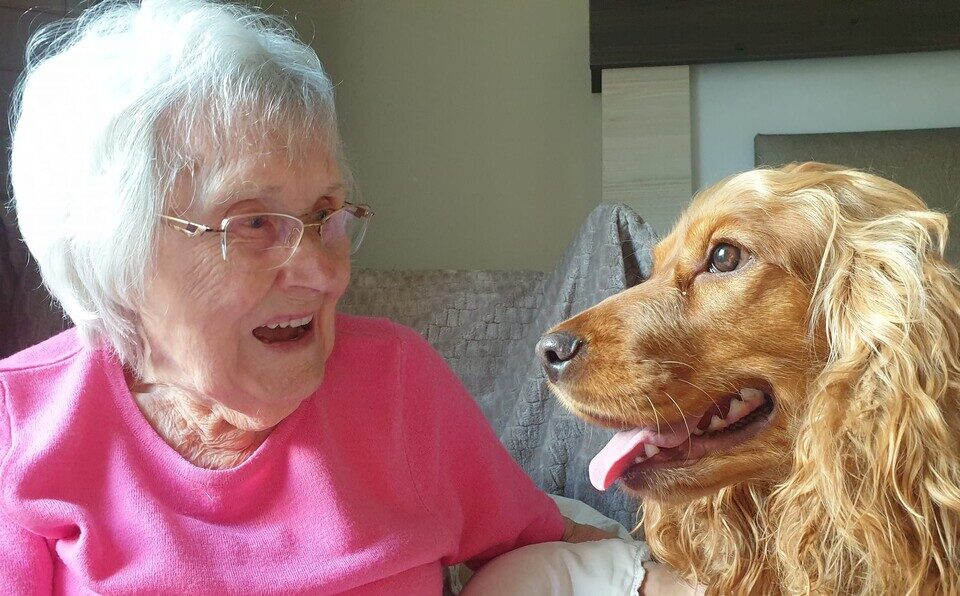
Animal interaction in care home activities programmes and the benefits
Pet Therapy and animal encounter experiences have become increasingly popular in social care settings, from petting pups to ponies, but where does animal interaction fit in a care home’s activities programme and what are the benefits? We asked Lorna Thornley, Lifestyle Manager at Coppice Lodge care home in Nottingham, for her thoughts.
‘The addition of animal experiences to our residents’ activities schedule, such as petting zoos and animal therapy sessions, truly enriches the lifestyle at Coppice Lodge. The combination of physical, emotional, and social benefits that come from these kinds of activities are, in my opinion, unique and valuable when organised safely.’
Physical Benefits
‘The movements of stroking, grooming, and feeding animals like dogs all increase the gentle use of muscles and joints – even more so if residents are confident enough to play with or walk the dog.
The provision activities such as exercise classes are still essential in supporting residents’ physical wellbeing, but animal interaction is a less direct, fun way of increasing activity whether the resident is fully mobile or relies on a wheelchair or walking aid.’
Emotional Wellbeing
‘Have you ever wondered why animals make us feel so happy? It’s because interacting with them can trigger the release of hormones like dopamine and endorphins, which transmit feelings of pleasure.
‘At Coppice Lodge, we’ve been visited by dogs, cats, ponies, and hamsters just to name a few, which the residents welcomed with open arms and a smile. In my experience, dogs do seem to have the greatest effect – they’re known as ‘man’s best friend’ for a reason! The residents get such joy from giving their love to a dog, and the dog reciprocates that love ten-fold.
‘For some residents, having common household pets around reignites cherished memories of their own experiences. Maybe they had a beloved family dog or a childhood rabbit; being around similar animals not only reminds the residents of irreplaceable memories, but it also sparks conversation with others.’
Social Advantages
‘Nothing sparks conversation and brings people together like shared experiences. During animal visits at Coppice Lodge, residents and team members come together to share stories and laughter, and the atmosphere is uniquely joyful.
‘However, the social interaction doesn’t end there. When petting zoos and similar services visit care homes, they also talk about the animal’s traits, needs, and even personalities, which provides a rich learning experience for residents. These learnings can often be a topic of discussion for days, and for some a newfound passion.’
Safely Implementing Animal Interaction Experiences
‘As care workers, we work hard to maintain a safe, clean, and healthy environment for the people who we support, so animal-related activities need to be executed in a way that protects everyone, all the while upholding moral practices. As always, infection prevention measures and regular hand washing should be a priority, but there are other things to consider.
‘When searching for animal therapy and interaction services, you should always ensure third party businesses are licensed, insured, and treat their animals well. You can usually find this information in the services’ Policies and Procedures, which should be easily accessible either online or by simply asking the provider themselves. Be sure to complete a briefing session with a representative of the service to risk assess and so that your teams are made aware of any rules before the visit takes place.
‘Just as importantly, know your residents! You should be aware of any residents who might dislike certain animals, or have allergies, and be sure to hold any animal-related activity in a separate area of the building to those who might not enjoy the experience. Animal interaction isn’t for everyone, so make sure those residents also have an engaging activity to take part in.’
